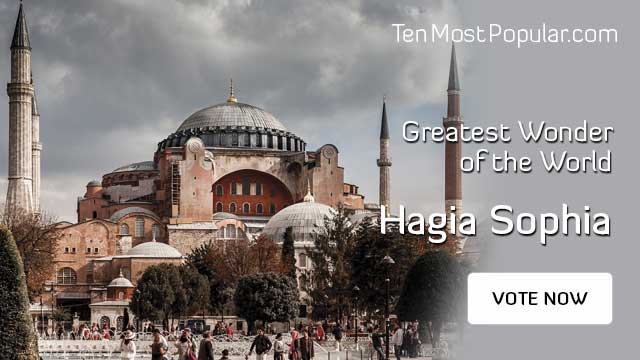Hagia Sophia
Famous for its large dome, Hagia Sophia is seen as a symbol of Byzantine architecture and is said to have "changed the history of architecture." This building remained the largest cathedral in the world for almost a thousand years until Sevilla Cathedral was completed in 1520.
The building which was originally built as a church between 532-537 at the behest of Emperor Rowami Timur Justinian I and was the third Holy Wisdom Church built on the same land, the two previous buildings were destroyed by riots. This building was designed by Greek measuring expert Isidore from Miletus and Anthemius from Tralles.
This church is dedicated to the Wisdom of God, the Logos, the second person of the Holy Trinity, his memorial party is held every December 25 to commemorate the birth of the incarnation of the Logos in Christ. Although sometimes referred to as Sancta Sophia (as if named after Santa Sophia), sophia is actually Latin phonetic pronunciation of the Greek word for wisdom. its full name in Greek is Ναὸς τῆς Ἁγίας τοῦ Θεοῦ Σοφίας, Naos tēs Hagias tou Theou Sophias, "The Holy Place of Wisdom Pilgrimage".
In 1453 AD, Constantinople was conquered by the Ottomans under the leadership of Sultan Mehmed II, who later ordered the conversion of the main Orthodox Christian church to a mosque. Known as Aya Sofya in Turkish spelling, this damaged building gave a strong impression to the Ottoman rulers and decided to turn it into a mosque. Various Christian symbols such as bells, pictures, and mosaics depicting Jesus, Mary, Christian saints, and angels were removed or closed. Various Islamic attributes such as mihrab, minbar, and four towers, added. Aya Sofya remained as a mosque until 1931 AD Then the building was closed to the public by the government of the Republic of Turkey and reopened as a museum four years later in 1935. In 2014, Aya Sofya became the second most visited museum in Turkey, attracting almost 3.3 million tourists per year. Based on data released by the Turkish Ministry of Culture and Tourism, Aya Sofya is the place in Turkey that attracts tourists the most in 2015.
From the initial conversion of this building to a mosque until the construction of the Sultan Ahmed Mosque (also known as the Blue Mosque) in 1616, Aya Sofya was the main mosque in Istanbul. The Byzantine architecture of Aya Sofya inspired many Ottoman mosques, such as the Blue Mosque, the Şehzade Mosque (Prince Mosque), the Süleymaniye Mosque, the Rüstem Pasha Mosque, and the Kılıç Ali Pasha Mosque.

